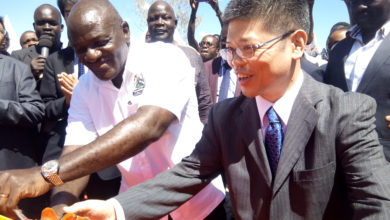Global Politics
UGANDA:COVID -19 IS REVEALING UGANDA’S POROUS HEALTH SYSTEM.
Uganda’s numbers are similarly unimpressive when it comes to medical doctors, with less than one doctor per 1,000 people,
By Grace Aldon Walukamba
We are told by everyone from the Ugandans to Yoweri Kaguta Museveni that the Uganda is a ‘steadily’ progressing economy. The statistics suggest otherwise
When Moses Kagugube developed tetanus like symptoms, he didn’t go to the doctor because he was frightened about the cost, or even not being accorded good care, being a lowly man in society. He was after several interventions dragged in critical condition to Kiludu hospital. Kagugube’s relatives later found him dead in his sick bed in Kiludu hospital. He was 57.
Kagugube, did not die as a result of Covid-19. He died in May 2020 as a result of Uganda’s healthcare system, a system that led him to avoid treatment for the common flu in order to avoid debt. It is that same system that is currently creaking under the pressure of a pandemic that experts warned was coming but Uganda government failed to prepare for. It is a system that does not qualify for the term “steady progress”.
Uganda’s Prime Minister Ruhakana Rugunda, is in isolation, several legislators and staff at the premier’s office have also been forced to check for COVID – 19 and self quarantine. Uganda has 80 ministers, 31 Cabinet and the rest state, while the number of parliamentarians is 429.
Uganda, we are told by everyone from the president to the East African Community, is a steadily progressive economy. That term, “steadily progressive economy”, sounds like an endpoint, like the man standing upright after a series of hunched and hairy iterations. It’s the contrast that makes the definition – progressing economies can only really exist if they are compared to their poorer “developing” counterparts. Covid-19 has merely shown the cracks in a very successful marketing campaign about which category the Uganda falls into. If the entire cabinet and parliament contracts COVID – 19, what will happen within our clinical health system?
The hospital bed density is 0.5 hospital beds for every 1,000 people in the Uganda (CIA, 2017), and less than one intensive care unit bed and ventilator for every 100,000 Ugandans. That’s fewer than Mauritius and Libya (4 beds per 1,000), Burundi (1.9) and all the other East African countries having one or less. Monaco ranks highest with 14 beds per 1000 people in the world. In fact, the Uganda ranks 169th out of 182 countries analyzed by the World Health Organization. This lack of hospital beds is forcing doctors across the country to ration care under Covid-19, pushing up the number of preventable deaths.

placing it behind Kenya (1.7), and .Ethiopia (1.9) doctors per 1,000, for a country that is described as being “in transition”). Life expectancies at birth are lower in the Uganda than they are in Botswana or Rwanda. Uganda has a higher mortality rate 437/100,000 than Kenya and Tanzania or Rwanda.
To- date Uganda has recorded 593 (as of 7-June-2020) COVID – 19 patients a fraction of 179,512 according to world meters.info website.
It’s not just health. Infant mortality rates are better in Seychelles and Kenya at 14.5 and 41.1 respectively (two countries the UN does not consider developed economies) than it is in the Uganda at 46.4.
Uganda needs to plan for its clinical health facilities in order to ease the effects of future pandemics. This may be done by improving all the above mentioned indicators that paint a picture demographically where our Pearl of Africa stands today.
The writer Aldon Grace Walukamba is a journalist and Communications Specialist.




